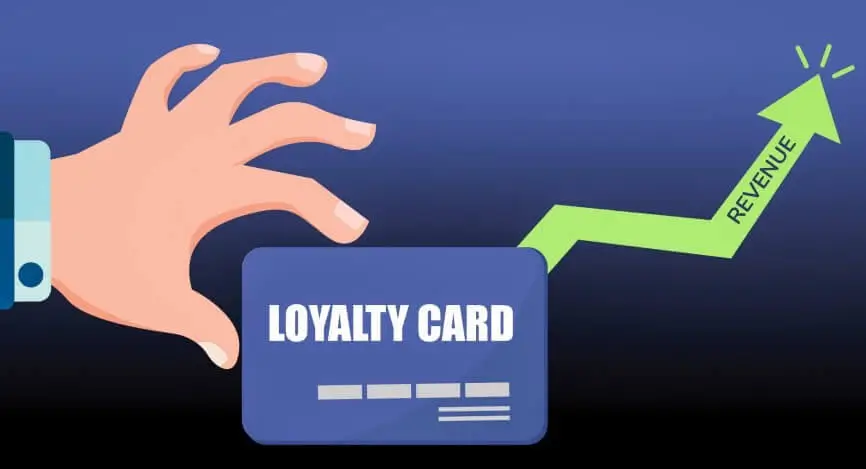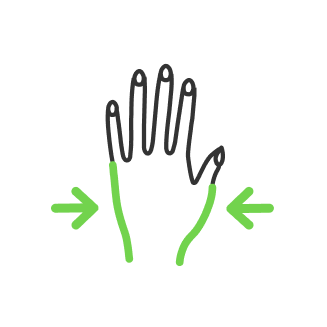Photography Prices — How to Create Photography Packages

- How to price your photography and Startup project
- 1. Evaluate yourself
- 2. Do Market Research
- 3. Cost of doing business
- 4. Establish your goals
- Beginner photography price list template
- Statistics for qualification rate
- Segments & prices
- How to create photography packages
- Definition
- Flexibility
- Contents
- Photography packages examples
- Copyright and advertising policy
- Loyalty programs
- How to make a pricing sheet for photography
Making a new startup is always a headache for a beginner, no matter the area. But when it comes to such popular segments as photography, things become even more complicated. At the beginning, you need to have some sort of business plan/model considering your capabilities. Today, we are going to guide you step-by-step to make your business payback. We are going to explain how to create beginner photography packages and how to price photography according to demand and supply on the market.
How to price your photography and Startup project
1. Evaluate yourself
The most common mistake for beginners is the casual approach to the business. That way, many people are charging random prices for their jobs. Scared of not having any demand, new photographers charge around $50 for their photoshoot. That way, it is freelance at best. You need to be able to evaluate your job in accordance with your value. If you are superb at photography, you should not be cheap. Because everybody knows, as new photographers appear, they are usually cheap, then the demand overwhelms, and it is hard to establish new prices because your customers are getting used to it being cheap. Some newcomers just have no clue how much to charge, therefore it requires market research to get a picture. Because if you start being super cheap, it will hurt your brand in the first place, and you will have to make up for this major mistake and start your business all over again. That is why making a business model is very essential in the first place to not mess things up later on.
2. Do Market Research
When it comes to anything business-related, you are going to have to do research to see what other people are doing in order to be a rival. Also, you need to figure out the niche that you want to get in. Google is the best friend for that matter with tags of the niche you are aiming for, whether it is wedding photography or personal photoshoots. You do not have to copy those prices from their sites, but you at least get the idea of how much people are charging for this.
3. Cost of doing business
After doing market research and establishing your 1st prices, which are going to be average, you need to see how it is going. If you feel burning out and working like there is no tomorrow, you need to take initiative to start raising your prices considering the demand and cost of your business.
To figure out the cost of your business, you need to evaluate all of your expenses to run your photography business.

There are four major expenses for running a sustainable business:
– Equipment
Tripods, lenses, digital camera, repairs, SD card. About $5000 of expense just right here.
– Studio
You need a place to work in. You can work at home, but the studio provides more flexibility and is healthy for your brand. In that case, you can do portrait photoshoots in a comfortable place, both for you and the customer. All the equipment is set here, which means less time for preparations, more time for sessions, and more sessions overall. $100-500 depending on the place. The con is that studio is profitable only for the local area
– Software
If you are working legitimately, you need to pay for the software that you use for editing. This item of expense is optional, but if you want to go pro – it is highly recommended. Most of the software you need to buy once to use evermore, therefore it is not a repeatable expense and can be neglected. However, it is better to set it in your supervision sheet.
– Marketing
Advertising is a major factor for your success, especially at the start due to you being unknown yet. Outlay varies a lot, depending on your dedication it can take from 300 up to 3000 dollars eventually.
– Tax and fee
Legitimate business is always accompanied by taxes and commissions
Running a photography business is not free, it is not cheap, and you have to run these numbers and a lot of people think like they spend a couple of dollars here, ten dollars there. But those are multiple varieties of expenses that you may just not think about, and soon things are going to start to add up into a big number. Therefore, many people do not even know if they make any profit running their business. Technically, your cost of doing business is what it takes to run your business and maintain it. So if you are not running your numbers, and you are charging not enough, you may not even go above that – which is your actual profit.
If you want to figure out your profit capabilities, it is a good start to record everything and score it in Excel tables or any advanced software for running a business. But for the start, you can visit nppa.org to do basic measurements between your expenses and incomes to see if it is profitable.
4. Establish your goals
Figure out how much you want to make per year or per month. That goal will motivate you and keep you in a flow. The better tip is not just to set the money goal but what you need it for, maybe buying a house or a car, or for any family purposes. This goal also applies to the rest of the tips, because it allows you to set this number into your tab where you supervise your profits and expenses. This will give you a hint of how to calculate photography pricing,
Beginner photography price list template
Statistics for qualification rate
Statistically speaking, doing market research, we found out that photographers make around $40 000 a year. That means you can set your average cost for the session somewhere in-between 200 and 400 dollars. Keep in mind, the lower the price, the more sessions you require. Speaking about the range of 200-400 dollars, it is actualized for professionals and top-professional photographers. That means you need to make sure about your qualifications.
That way, students charge around 40-60 dollars, semi-pro around 180-200 dollars on average.

Segments & prices
The Photography area of influence is divided into multiple segments:
- Portraits
- Events
- Real estate
- Website photo
Each of the niches has its cons & pros and prices.
- Portrait photoshoots
Doing a portrait photoshoot, you would be able to take $130—$250 on average, depending on the quality of your brand. The main benefit here is that demand is clear, and the income is consistent. Many clients are commercial. Though, you will have to move around a lot from one session to another here and there multiple times a day to get to actual numbers.
- Event sessions
Seasonal events grant more income, due to rising demand and specifics. You can raise from $1000 up to $3000 and even more per session, depending on the event scale. Major events like weddings usually grant more income than some parties or opening photoshoots.
- Real estate and architecture
Real estate photoshoots depend on the place the most. Pricing varies the same as for portraits. But if averages for portraits do not change that much, here you can raise up to $1500 if shooting architecture and your reputation are already on the spot. With a good reputation, you can get more money for traveling to places for photoshoots. This allows you to pay rent or a hotel and other expenses like the equipment you need in order to get the job done in a location of your employer.
- Web content
Probably the lowest income is from the website's photography segment. Employers typically ask you to shoot all their assortment, which allows you to earn around $100. But you can also do product photo edit as a part of your package to raise the price for good. That is why photography packages are so good for doing business. But we are going to do a deeper break down about the packages business model onwards.

How to create photography packages
Definition
1st things 1st, what is the definition of a photography package? This is a set of services that you provide to the customer, collected together and being an integral part of the deal. That allows you to have a reliable deal with preset jobs and payments.
Flexibility
Photography service can be provided both individually and with packages.
The advantage of packaged service is that you can vary the number of services in a package depending on the customer's demand and revenue. But packages should be flexible to cover any demand and be affordable for each type of customer.
For example, if you operate in regions where demand is based on cost, you can offer an appropriate service package based on the customer's budget, let's call it “Budget”? I think the client would be offended with that call, rather call it “Quick Start”. Another package may include as many items as possible in order to justify the high price. However, the customer does not have to use all the included services, but at least he will see the options that he can use and is paying for. This package works on the principle of “all-inclusive”, we can call it that way, but we call it “VIP” instead to make the client feel special.
Contents
It is important to understand what is in demand. Time is money, so you can include hourly billing in your package. In addition to the photoshoot itself, you can also include post-processing in your package, which is often already taken for granted. Nevertheless, having bought a package of services, the client will no longer be able to refuse it.
Photography packages examples
In order for packages to sell better, you must have a clear price list that reflects the difference between purchasing individual/exclusive services and packages, with a clear benefit for the client in favor of choosing a package. However, it still works to your advantage, and we get a win-win by that.
Let us try to create a package and set exclusive prices then.
“VIP” package $380 (expensive)
- Departure to the client – $30
- 2-hours photoshoot – $100
- Editing up to 50 photos – $5 each
- Photos are copyrighted
Exclusive price-list (options)
- Departure – $50
- Shooting in studio – free
- 1-hour photo session (extension) – $70
- Editing of 1 photo (add a photo to package) – $10
- Printing 8×10 – $60
“Quick Start” package $130 (Budget)
- Shooting in studio – free
- 1-hour photo session – $60
- Editing up to 10 photos – $7 each
- Photos are not copyrighted

And there we already have a customer-oriented variety. We have separate options, expensive and cheap/budget packages. You can also figure out something in between, following the same principle.
Also, make your price numbers look good. Do not use straightforward numbers. Use $299 instead of $300, and no and no decimals after. That works on a psychological level of comprehension. When you see the $300 price – you know this is 300 dollars, but when you see the $299 price, you subconsciously afford more, considering this is something around 200 bucks.
Copyright and advertising policy
Of course, you can always negotiate with the client about his photo privacy. But you can also include this as an option in your packages. If you are just beginning your path into professional photography, you can benefit more if you are allowed to place some photos on your Instagram for portfolio purposes. As you grow, getting more experienced and recognized, you can take advantage of customers’ privacy demands and increase the price for your job instead of advertising.

Loyalty programs
You can set additional packages for clients’ loyalty. It works well, especially for beginners who want to create a brand or name. A discount is always a temporary event that will help you grow faster, and at the same time, you will not need to explain a further price increase of your services.

If your clients return, make sure to set up some exclusive loyalty programs for them.
How to make a pricing sheet for photography
Now, when we have all set, we need to make a sheet that will be used as the main page, visit card, and basically being our face. That way, we need to make sure it is clean, modern, and contains everything you need to promote your business in the most efficient way.
Place the name of your studio in the middle or at the top of the sheet, the way it will grab the attention. Make a short description with the text selling your product, a couple of sentences is enough, or maybe figure out your slogan that will serve as your unique trademark.
Set 3 to 5 packages with template images and prices, considering the niche you are working in (Events, family photo, portrait, etc.) Make sure to have a clear description of these packages. Use complementary colors for the style of your sheet. The colors should not be very bright, the best colors to use are white (background) green, and blue (info).

Co-founder of RetouchMe. In addition to business, he is passionate about travel photography and videography. His photos can be viewed on Instagram (over 1 million followers), and his films can be found on his YouTube channel.
Moreover, his profile is featured on the most popular and authoritative resource in the film industry — IMDb. He has received 51 international awards and 18 nominations at film festivals worldwide.

with RetouchMe














